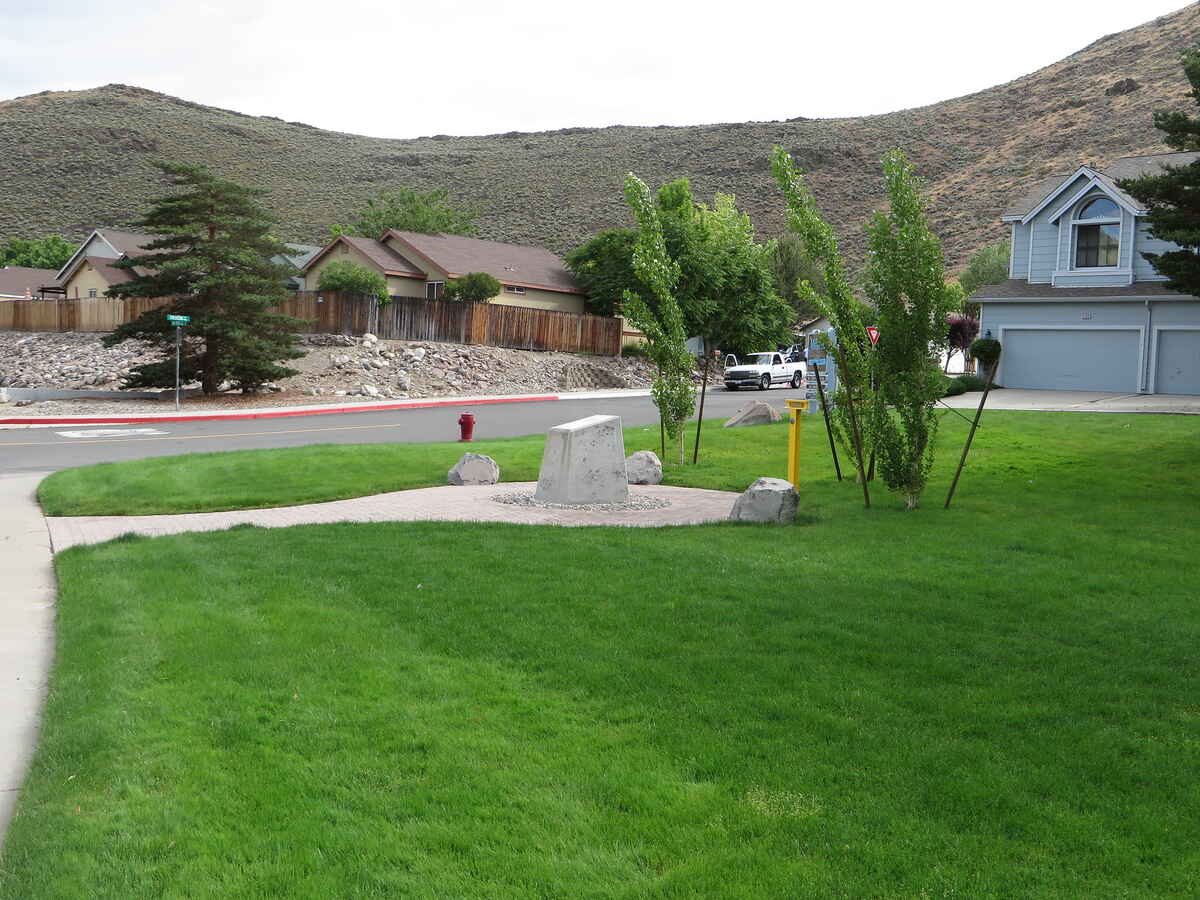
When it comes to finding the best grass seed for Nevada, you have to remember where you are. Nevada is made up of four major deserts and seven minor ones. Of the 110,000 square miles that make up the state, only 6,000 are cultivated.
Still, if you are going to live there, you will want to know what kind of grass is best. And it is important to have grass: It prevents soil erosion and serves as a fire break.
If you’re short on time, skip ahead to our quick decision guide on how to choose the best grass type for Nevada.
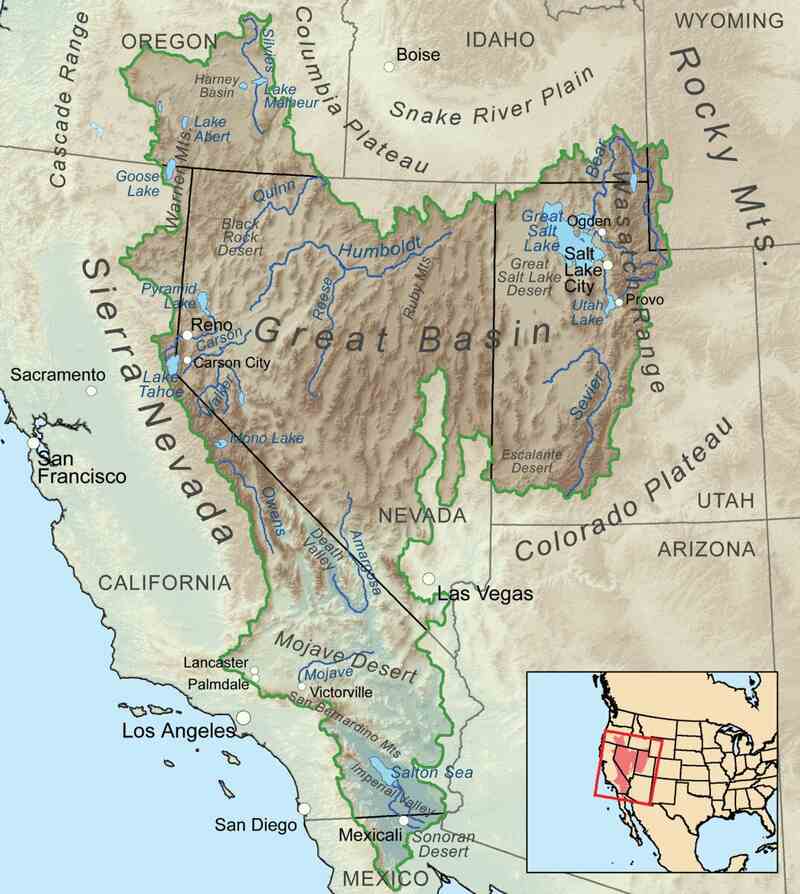
What to Know About Grass Growing Zones
Nevada is the only state that includes all three grass growing zones.
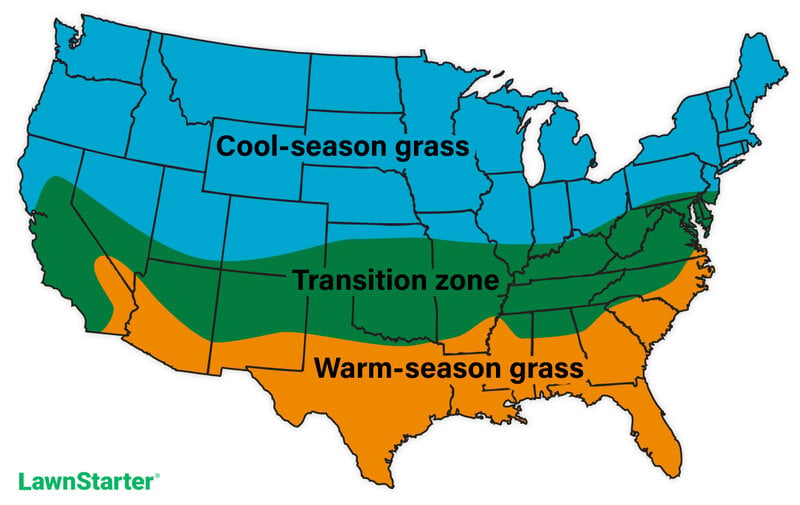
| Warm-Season Grass | Cool-Season Grass | |
| During the summer | Grow their best | Go dormant |
| During the winter | Go dormant | Continue the growth that started in the fall |
| To establish | Seed, sod or plugs | Seed or sod |
| In Nevada and its desert clime | Better in the summer. For winter, you might overseed Bermuda with cool-season ryegrass. | Will need more water to make it through the summer, an issue in Nevada |
| In the transition zone (the middle elevation of the Mojave Desert) | Persist and do well in the 2,000-3,000 feet range | Will also do well in the 2,000-3,000 feet range |
Source: University of Nevada, Reno
The Best Grasses for Nevada: Warm-Season
With desert dominating the state, you have to keep that in mind in selecting grass. You probably want to choose from the warm-season grasses, as these are the best options for a desert climate.
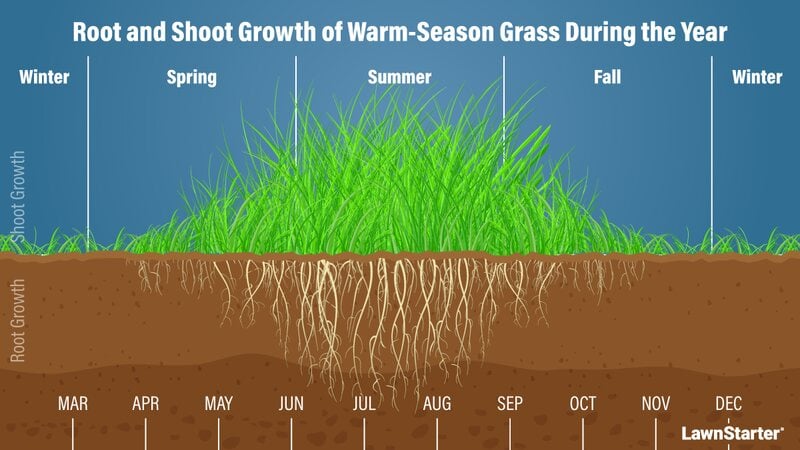
Bermudagrass
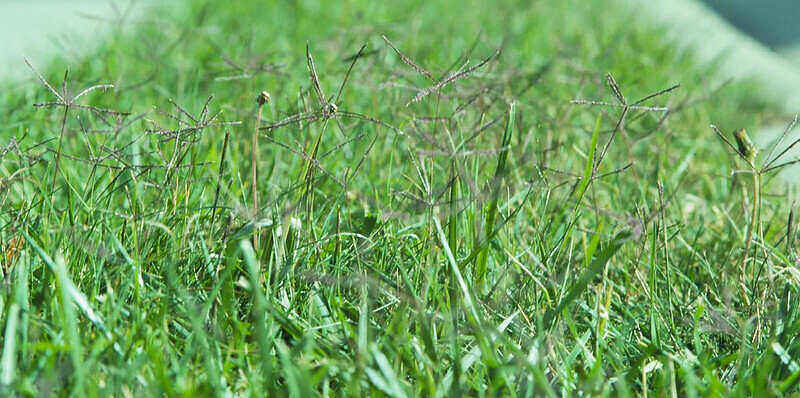
Photo Credit: Matt Lavin / Flickr / CC BY-SA 2.0
Bermudagrass is a popular warm-season grass that tolerates poor, unimproved soils and is highly tolerant of drought. Bermudagrass does well in full sun and can create a full, dense turf that stands up to heavy wear and tear. However, this is not a low-maintenance grass. It needs frequent mowing due to its aggressive nature and regular fertilizing to look its best.
Pro Tip: If you suffer from a grass pollen allergy, beware: Bermuda produces a lot of pollen if left to go to seed.
Classification: Warm-season grass
Spreads by: Stolons and rhizomes
Shade tolerance: Low; thrives in full sun
Drought tolerance: High
Foot traffic tolerance: High
Maintenance needs: Needs frequent mowing due to fast growth rate; develops thatch easily; needs regular fertilization
Mowing height: Set the mowing height between 0.5 and 1.5 inches for hybrid Bermudagrass cultivars. Mow common Bermudagrass down to 1.5 to 2.5 inches.
Potential for disease: Good resistance to disease, although diseases are common; low resistance to insects
Soil pH: 6-6.5
Soil type: Tolerates most soil types
Grass Seed Options:
– Scotts Turf Builder Bermudagrass (10-lb. bag)
– Hancock Seed Co. Bermudagrass (50-lb. bag)
Buffalograss
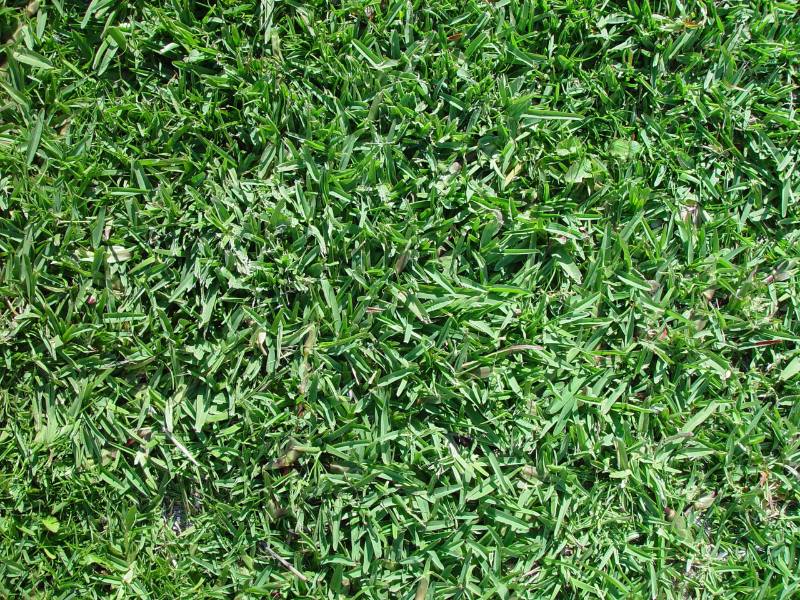
Photo Credit: Pixnio
Buffalograss is descended from North American prairie grasses. That means it has a high drought tolerance and low water and fertilizer needs. In fact, if it receives too much water or fertilizer, weed encroachment is common. Buffalograss is not very wear-tolerant and does best in the full sun.
Classification: Warm-season grass
Spreads by: Stolons
Shade tolerance: Low
Drought tolerance: High
Foot traffic tolerance: Low
Maintenance needs: Low fertilizer and mowing needs. Requires weed control.
Mowing height: Set the mowing height between 2 and 3 inches.
Potential for disease: Good tolerance against diseases and insects
Soil pH: 6.5-7.5
Soil type: Native clay soils, not sandy soils
Grass Seed Options:
– Everwilde Farms Buffalograss Seeds (1 lb. of seeds)
– Buffalograss seed (primed) (5-lb. bag)
St. Augustinegrass
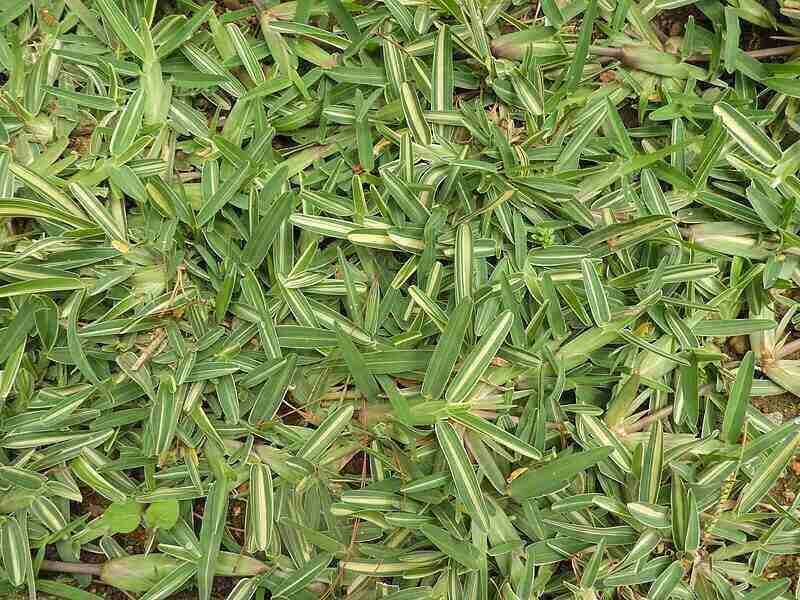
Photo Credit: Yercaud-elango / Wikimedia Commons / CC BY-SA 4.0
St. Augustinegrass has the best shade tolerance of any warm-season grass. It’s used to replace Bermuda in shady areas and is tolerant of desert soils. It’s also a slow grass to establish and may have difficulty surviving low winter temperatures. St. Augustinegrass is most often established with sod or plugs, as seed is not commercially available.
Classification: Warm-season grass
Spreads by: Stolons
Shade tolerance: Moderate. It is the most shade tolerant warm-season grass.
Drought tolerance: Moderate to High
Foot traffic tolerance: Low
Maintenance needs: Needs frequent mowing due to fast growth rate; develops thatch easily; needs regular fertilization.
Mowing height: Set the mowing height between 3.5 and 4 inches.
Potential for disease: Moderate to high
Soil pH: 6-7.5
Soil type: Tolerates many soil types; prefers moderately fertile and moist (not waterlogged) soils; doesn’t tolerate soil compaction
Grass Plug Options:
– Seed Ranch St Augustine Seville Grass Plugs (2 Trays)
– Seed Ranch St Augustine Floratam Grass Plugs (2 Trays)
Seashore Paspalum
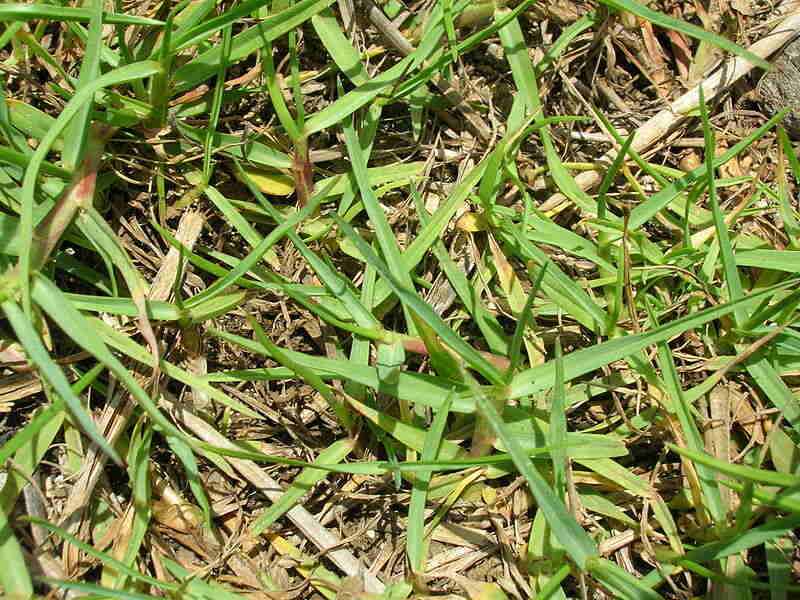
Photo Credit: Forest & Kim Starr / Wikimedia Commons / CC BY 3.0
Seashore paspalum has become a mainstream warm-season grass since its early days as a specialty, salt-tolerant grass. It’s tolerant of drought and desert soils with a moderate tolerance for wear. Don’t plant this grass in the shade, though; it thrives only in full sun.
Classification: Warm-season
Spreads by: Rhizomes and stolons
Shade Tolerance: Low
Drought Tolerance: Moderate
Foot Traffic Tolerance: Moderate
Maintenance Needs: Moderate fertilizer and frequent mowing.
Mowing Height: Set the mowing height between 1 and 2 inches.
Potential for Disease: Moderate. Common diseases include large patch and dollar spot.
Soil pH: Tolerates a wide soil pH range, from 3.6 to 10.2
Soil Type: Tolerates a wide range of soils, including wet, saline soil.
Grass Seed and Sod Options:
– Seed Ranch SeaShore Paspalum Coated Grass Seed – 1 lb.
– Seed World SeaShore Paspalum Grass Seeds (various amounts)
– Other places to purchase seashore paspalum sod
Zoysiagrass
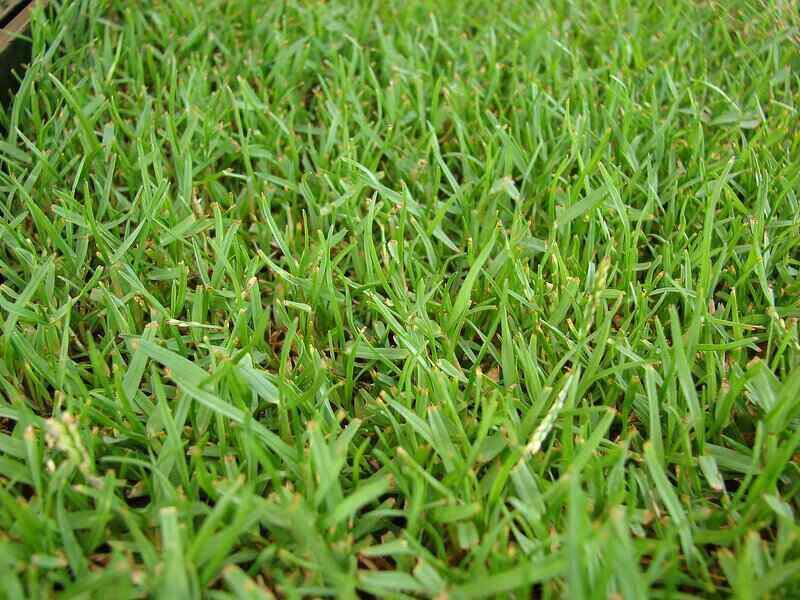
Photo Credit: Forest & Kim Starr / Wikimedia Commons / CC BY 3.0 US
Once established, Zoysiagrass is a tough, wear-resistant grass and is tolerant of desert soils. Zoysias can survive in moderate shade and are very resistant to foot traffic. Unfortunately, Zoysias are slow to establish and slow to recover from damage. Due to this slow growth, it is recommended to establish Zoysia from sod.
Classification: Warm-season grass
Spreads by: Stolons and rhizomes
Shade tolerance: Moderate
Drought tolerance: Moderate to High
Foot traffic tolerance: High, but recovers slowly from damage
Maintenance needs: Low nitrogen fertilization requirements, although, it’s prone to thatch build-up.
Mowing height: Set mowing height between 1 and 2 inches.
Potential for disease: Good disease tolerance overall
Soil pH: 6-6.5
Soil type: Well-draining, some cultivars are more tolerant of a wide range of soils than others.
Grass Plug and Seed Options:
– Zoysia Plugs (50 Large Grass Plugs)
– Zoysia Plugs (50 Full & Lush Grass Plugs)
– Zoysia Plugs (100 Plugs)
– Zenith Zoysia Grass Seeds (1/8 lb. of seeds)
The Best Grasses for Nevada: Cool-Season
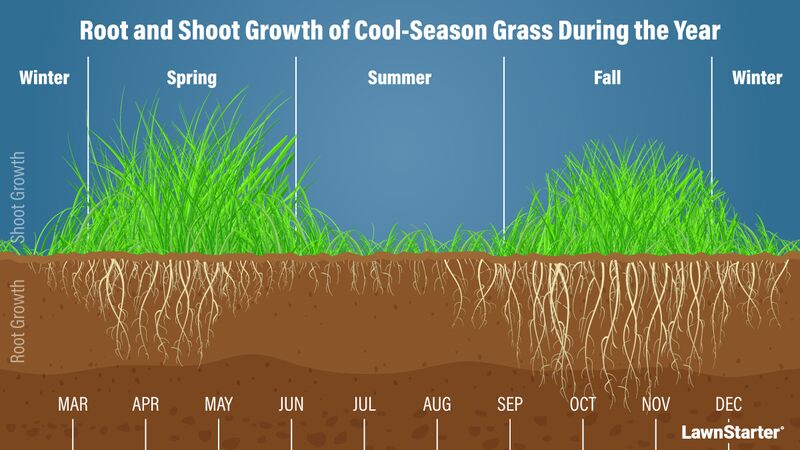
Cool-season grasses might be the right choice in places through Nevada, especially in the transition zone and cool-season zone. They will grow in the spring and fall, but can go dormant in the heat of the summer, and suspend growth in the winter cold.
Kentucky bluegrass is common in America, but it doesn’t do well in high temperatures. It should be avoided unless needed to fill out a mix with other turfgrasses.
Of the cool-season grasses, these three are the best for Nevada:
Fine Fescue
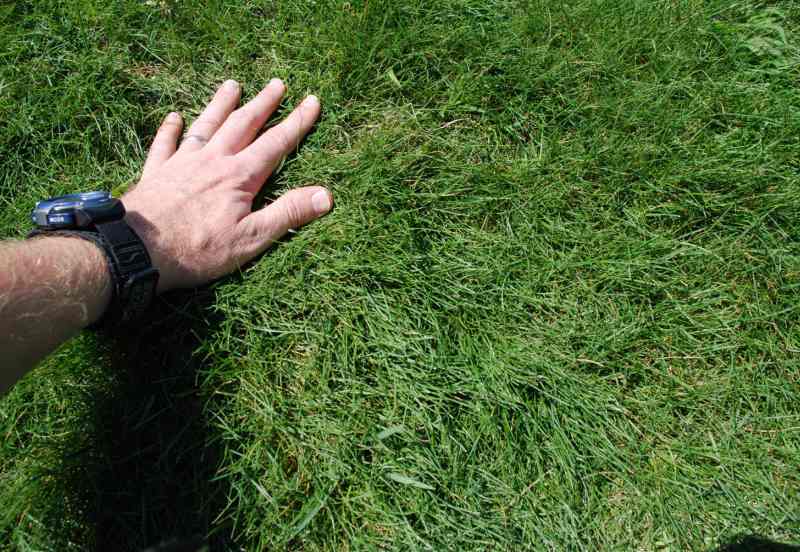
Aaron J. Patton, Ph.D. / Turfgrass Extension Specialist at Purdue University
The fine fescues (creeping red fescue, hard fescue, and sheep fescue are the ones usually cited for Nevada) are growing in use due to their need for less water and less fertilizer than other grasses. They aren’t as good to walk on, but will hold the soil and resist wildfire when well maintained.
Classification: Cool-season grass
Spreads by: Creeping red fescue spreads by rhizomes, while other fine fescues are bunch-type grasses, such as Chewings, hard, and sheep fescues.
Shade tolerance: Moderate to High, depending on species
Drought tolerance: Moderate to High, depending on species
Foot traffic tolerance: Low to Moderate, depending on species
Maintenance needs: Low fertilizer and mowing needs
Mowing height: Set mowing height between 2.5 and 4 inches, depending on species.
Potential for disease: Moderate. Common diseases include red thread, leaf spot, dollar spot, summer patch, and powdery mildew.
Soil pH: 6-6.5
Soil type: Will not perform well in wet soil conditions. Prefers drier soils and tolerates a wide range of soil types and fertility.
Grass Seed Options:
– Outsidepride Legacy Fine Fescue Grass Seed (5 lbs.)
– Eretz Creeping Red Fine Fescue Seed (choose your size)
– Outsidepride Creeping Red Fine Fescue Grass Seed (25 lbs.)
– Outsidepride Hard Fine Fescue Grass Seed (10 lbs.)
Perennial Ryegrass
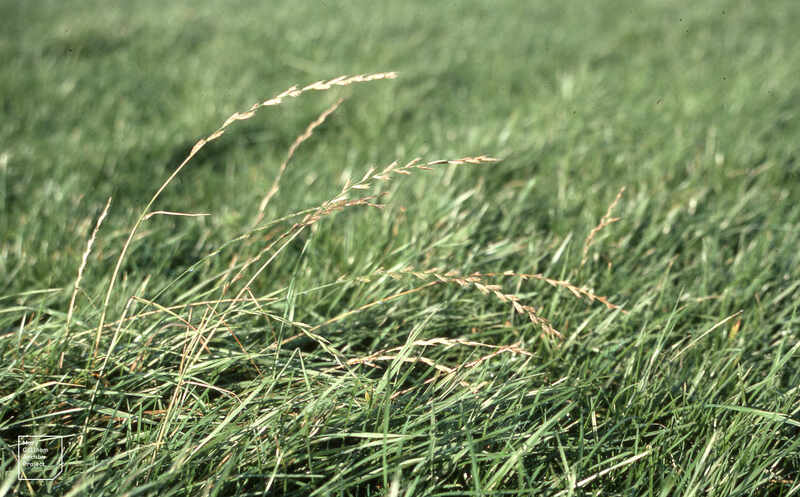
Photo Credit: Dr Mary Gillham Archive Project / Flickr / CC BY 2.0
In Nevada, perennial ryegrass is commonly used on golf courses to provide a lovely green color during Bermuda’s winter dormancy. However, improved heat-tolerant varieties are opening up other options for Nevada home lawns: These newer varieties have found a niche in home lawns in the middle elevations of the Mojave.
Classification: Cool-season grass
Spreads by: Has a bunch-type growth habit
Shade tolerance: Low
Drought tolerance: Low
Foot traffic tolerance: High
Maintenance needs: Moderate mowing and fertilization requirements. Thatch is not significant.
Mowing height: Set mowing height to 1.5 to 2.5 inches
Potential for disease: High. Common diseases include gray leaf spot, red thread, and leaf spot/melting-out.
Soil pH: Can grow in soils with a pH between 5 and 8, but prefers between 6 and 7.
Soil type: Prefers good drainage and fertility, but can tolerate some poor drainage.
Grass Seed Options:
– Outsidepride Perennial Ryegrass Seed (5 lbs.)
– Eretz ProTurf Perennial Ryegrass Fine Lawn Seed (choose your size)
Tall Fescue

Aaron J. Patton, Ph.D. / Turfgrass Extension Specialist at Purdue University
Tall fescue is a popular choice in the transition zone found in the Mojave Desert and tolerates a wide variety of soils. Green throughout winter, tall fescue does require regular watering but is well adapted to the heat in summer and otherwise requires little maintenance. The improved varieties of “turf-type” tall fescues are your best bet for a good quality lawn.
Classification: Cool-season grass
Spreads by: Produces short rhizomes but has a bunch-type growth habit
Shade tolerance: Moderate
Drought tolerance: Moderate to High
Foot traffic tolerance: Moderate
Maintenance needs: Frequent mowing. Does not produce significant thatch.
Mowing height: Set mowing height to 2 inches when grass reaches 3 inches tall.
Potential for disease: Tolerant of most diseases when properly maintained.
Soil pH: 5.5-6.5
Soil type: Adapted to a wide range of soil conditions, but prefers fertile clay soils with good drainage.
Grass Seed Options:
– Triple-Play Tall Fescue Grass Seed Blend (5000 sq ft)
– Eretz Kentucky 31 K31 Tall Fescue Grass Seed (choose your size)
– Pennington The Rebels Tall Fescue Grass Seed Mix (7 lb.)
In the Desert, You Have to Take Care of Your Lawn
For grass to form a sustainable and healthy lawn in the desert, make it a point to practice good, basic lawn care.
- Fertilize only when the grass is moving out of its dormant stage. Say, when it starts to green again.
- Mow when the lawn is dry. Not when it’s wet.
- Water early in the morning, before the heat of the day will burn it off too quickly. Some people water the grass as early as 4 a.m. (automatic systems have their benefits).
- Check the irrigation system settings. Often, sprinklers are set up to establish a lawn, especially for a new lawn. Once a lawn is established, you want to use less water, not only to save money, but to keep out fungus and weeds and to keep the water from blocking the oxygen the soil needs.
Desert Grasses Are Being Developed
Here is something to be aware about: Researchers are working constantly to develop varieties that will do better in the desert than the current ones.
There is work being done with Bermudagrass strains to develop ones that can withstand the temperature drops of winter. Golf courses will pay for such research, but homeowners can benefit from it.
Grass in the Desert of Nevada
Turfgrass can used inappropriately in Nevada’s desert climates:
- As a groundcover in areas without plants. “Negative spaces,” as they are called, can be left unplanted to reduce water use, with the benefit of reducing maintenance. Xeriscaping is an alternative; it covers the ground, but in a way that is desert friendly.
- On slopes. If the slope is greater than 3-1, a lot of any watering will just run off.
- On small patches. When you water grass in an area less than 8 feet wide, the water doesn’t fall evenly.
- Too close to hardscapes. When the lawn is watered, some of that water will land on things that don’t need it, such as hardscaping — or your house, which can create damage. You not only waste water, you waste the money you paid for the water, and the money you will have to pay to repair the damage to your walls.
Best Grass for Las Vegas
The best grass for Las Vegas is not grass at all: It’s desert landscaping. Being in a desert has led just one part of Nevada, Las Vegas, to become the first city in the nation to attack its water usage. In 1998, Las Vegas started paying people to remove lawns and replace them with xeriscaping or some other type of desert landscape.
The Nevada legislature mandated the removal of decorative (aka “nonfunctional”) turf (thus excepting parks and ballfields) in Southern Nevada by the end of 2026. Explore your options for grass alternatives in Las Vegas.
How to Choose the Best Grass Type for Nevada
Drought Tolerance
Every decision about your lawn in the Las Vegas Valley will revolve around the issue of water. Those issues are factors throughout Nevada. You will regret it if you don’t take this into account when selecting your grass. Drought-tolerant grasses* are a must in some areas and should be taken into account in others.
- High tolerance for drought: Bermudagrass, buffalograss, fine fescue
- Medium to high tolerance: St. Augustinegrass, seashore paspalum, Zoysia, tall fescue
- Low tolerance: Perennial ryegrass
*While the terms drought tolerant and drought resistant are known to be used interchangeably, drought-resistant grasses and plants are better suited for surviving longer periods without water. The grasses listed as drought-resistant are usually native grasses, ones that have survived because they adapted to the area.
What Your Lawn Will Look Like
If you want a green lawn to die for, you can invest the money and time. But if you aren’t careful, you can end up with maintenance that takes either a lot of your money or a lot of your time, when you didn’t intend for it to be so.
- High quality appearance: Fine fescue, perennial ryegrass
- Medium appearance: Bermudagrass (depends on how well it is maintained and the cultivar), tall fescue, St. Augustinegrass, seashore paspalum
- Not considered to be attractive: Buffalograss (depending on the cultivar and mowing choice), Zoysia (it doesn’t stay green as long as other grasses)
How You Will Use Your Lawn
Do you want a lawn for the kids to play on? How about one where you can invite batches of friends for a lawn party? Or one that keeps the soil from washing away? All are valid. But call for different grasses.
- High tolerance for traffic: Bermudagrass, perennial ryegrass, Zoysiagrass
- Medium tolerance: Tall fescue, seashore paspalum
- Low tolerance: Buffalograss, fine fescue, St. Augustinegrass
Resistance to Pests*
Healthy, growing grass is the best defense against lawn pests, but in the desert and drought of Nevada, it isn’t as easy to get that.
- High resistance to pests: Buffalograss, St. Augustinegrass (when well adapted to the area), Zoysiagrass
- High resistance when endophyte-enhanced: Fine fescue, tall fescue, perennial ryegrass
- Low resistance: Bermudagrass, Perennial ryegrass, Seashore paspalum
*Can vary widely depending on the cultivar and the climate.
Sun or Shade
A yard with six hours or more of direct sun calls for a far different grass than a yard with four hours or less. Have a bunch of shade trees? A tall fence? Or none of that? It matters.
- If you have a lot of sun, but some shade: Seashore paspalum, St. Augustinegrass, tall fescue
- Known as the “shade grass”: Fine fescues
- Good in the sun, not in the shade: Bermudagrass, buffalograss, perennial ryegrass, Zoysiagrass
A Call to Action
Drought and the desert conditions of Nevada have made the decisions about your lawn more important than ever. Don’t be casual about it; make decisions about what you want, and how to get there.
If you want the help of a professional lawn care service, you can find one through LawnStarter. We have trusted lawn care pros across the state who can mow, do leaf removal, trim bushes, and provide lawn treatment.
Additional source:
Main Image Credit: Ken Lund / Flickr / CC BY-SA 2.0
LawnStarter participates in the Amazon Services LLC Associates Program, an affiliate advertising program. LawnStarter may earn revenue from products promoted in this article.